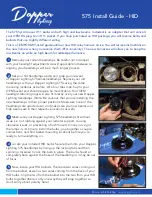
102
63J081
(1) ABS warning light
(2) Brake system warning light
• If the ABS warning light (1) on the
instrument panel comes on and
stays on while driving, there may
be a problem with the ABS system.
Ask your MARUTI SUZUKI dealer
to inspect the ABS system
immediately. If the ABS system
becomes inoperative, the brake
system will function as an ordinary
brake system that has no ABS.
• If the ABS warning light (1) and the
Brake system warning light (2) on
the instrument panel simultaneo-
usly stays on or comes on when
driving, both anti-lock function and
rear brake force control function
(Proportioning valve function) of the
ABS system may have failed. If so,
the rear wheels may easily skid or
the vehicle can even spin in the
worst case when braking on a
slippery road or when hard braking
even on a dry paved road. Ask your
MARUTI SUZUKI dealer to inspect
the ABS system immediately. Drive
carefully, avoiding hard braking as
much as possible.
How the ABS Works
A computer continuously monitors wheel
speed. The computer compares the
changes in wheel speed when braking. If
the wheels slow suddenly, indicating a
skidding situation, the computer will
change braking pressure several times
each second to prevent the wheels from
locking. When you start your vehicle after
a stop you may hear a momentary motor
noise as the system checks itself.
The ABS may not work properly if
tyres or wheels other than those
specified in the owner’s manual are
used. This is because the ABS works
by comparing changes in wheel
speed. When replacing tyres or
wheels, use only the size and type
specified in this owner’s manual.
OPERATING YOUR VEHICLE
5-7
• On some types of loose surfaces
(such as gravel, snow-covered
roads, etc.) the stopping distance
required for an ABS-equipped
vehicle may be slightly greater
than for a comparable vehicle with
a conventional brake system. With
a conventional brake system,
skidding tyres are able to “plow”
the gravel or snow layer, shorten-
ing the stopping distance, ABS
minimizes this resistance effect.
Allow for extra stopping distance
when driving on loose surfaces.
• On regular paved roads, some
drivers may be able to obtain
slightly shorter stopping distances
with conventional brake systems
than with ABS.
• In both of the above conditions,
ABS will still offer the advantage
of helping you maintain directional
control. However, remember that
ABS will not compensate for bad
road or weather conditions or poor
driver judgment. Use good
judgment and do not drive faster
than conditions will safely allow.
(Continued)
(Continued)
Summary of Contents for Automobile
Page 2: ...2 ...
Page 11: ...11 ...
Page 12: ...12 ...
Page 42: ...42 ...
Page 55: ...54 Instrument Cluster Diesel Without Tachometer 75J014 INSTRUMENT PANEL 3 3 ...
Page 57: ...56 Instrument Cluster Petrol without tachometer 75J014 INSTRUMENT PANEL 3 5 ...
Page 95: ...94 ...
Page 119: ...118 ...
Page 165: ...164 ...
Page 166: ...165 BODY WORK CARE Corrosion Prevention 10 1 Vehicle Cleaning 10 2 BODY WORK CARE ...
Page 171: ...170 ...
Page 172: ...171 GENERAL INFORMATION Vehicle Identification 11 1 GENERAL INFORMATION ...
















































